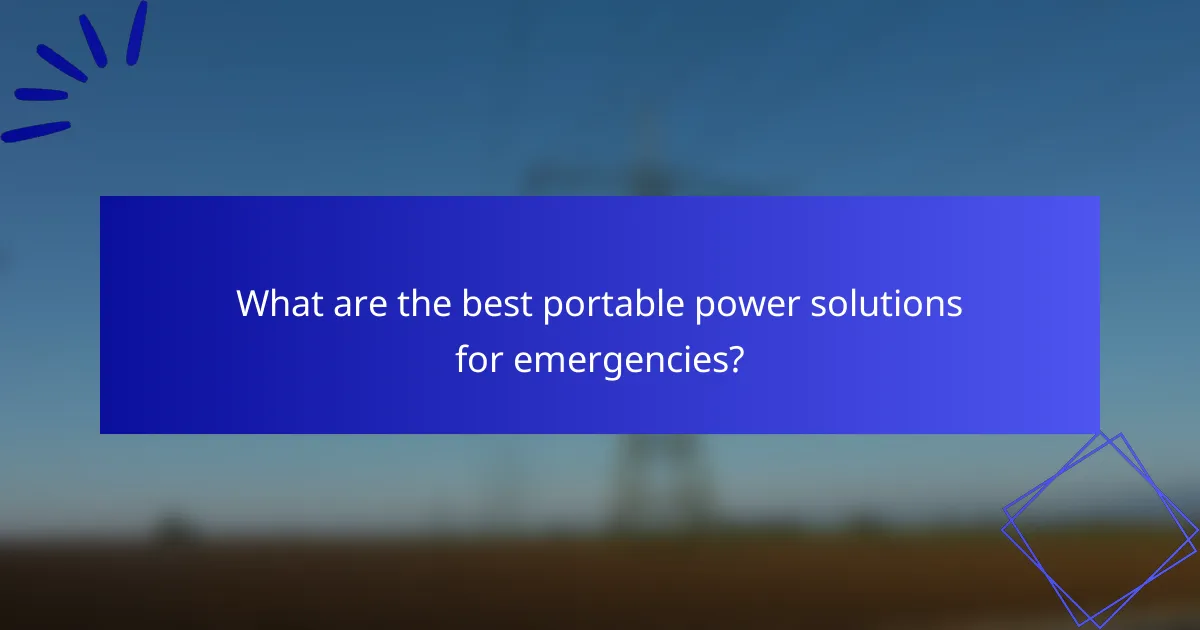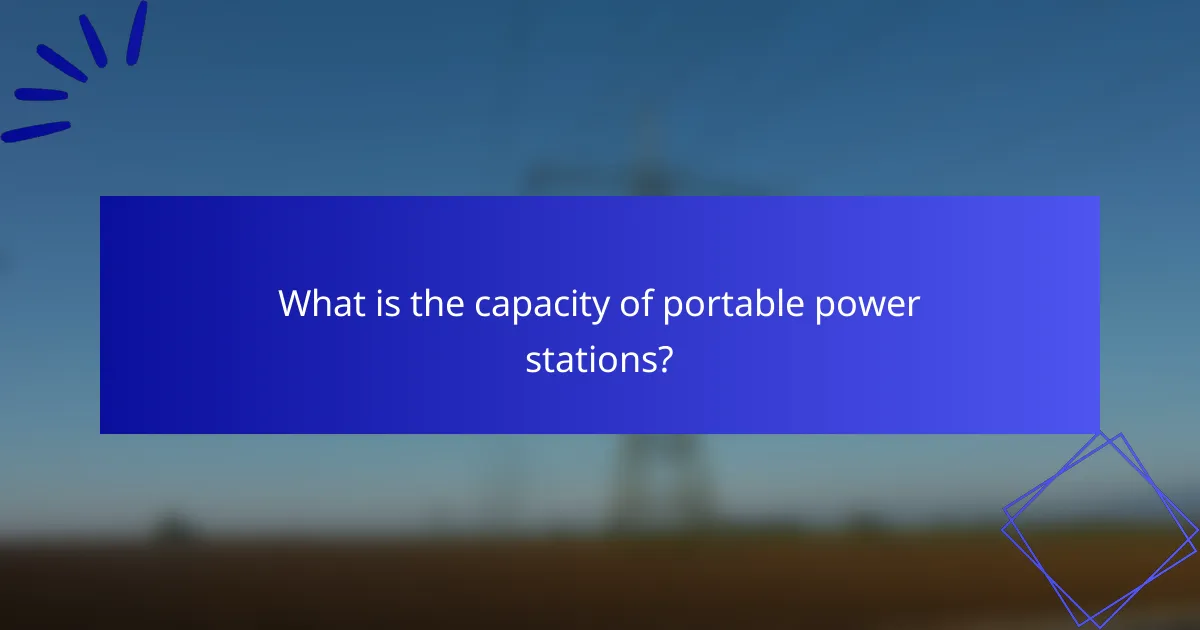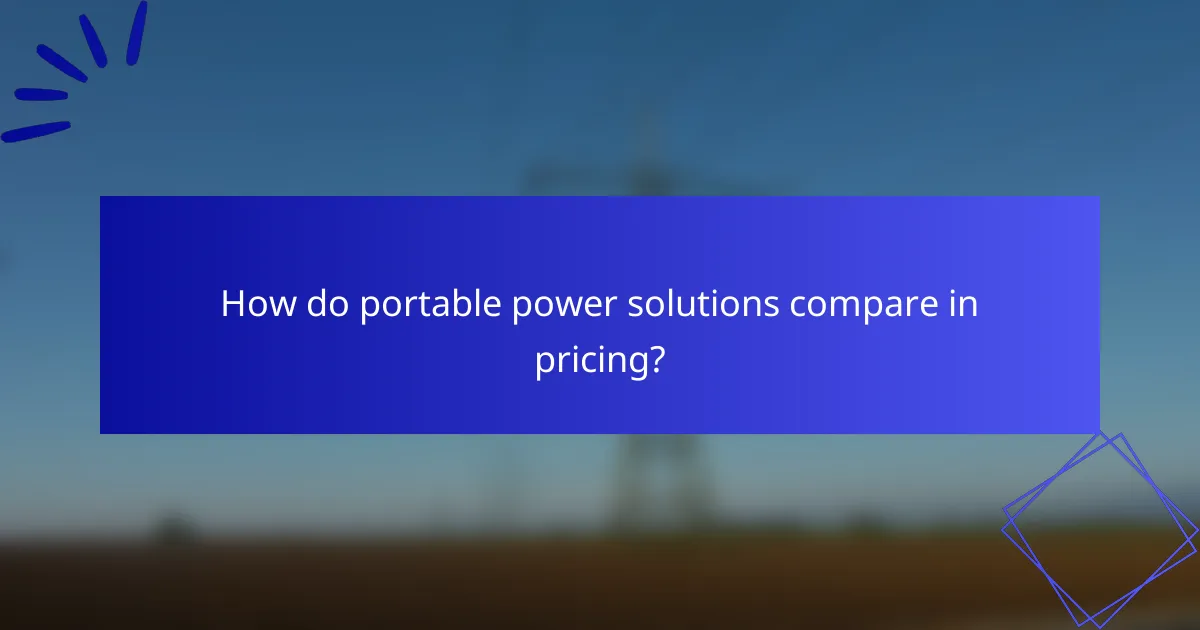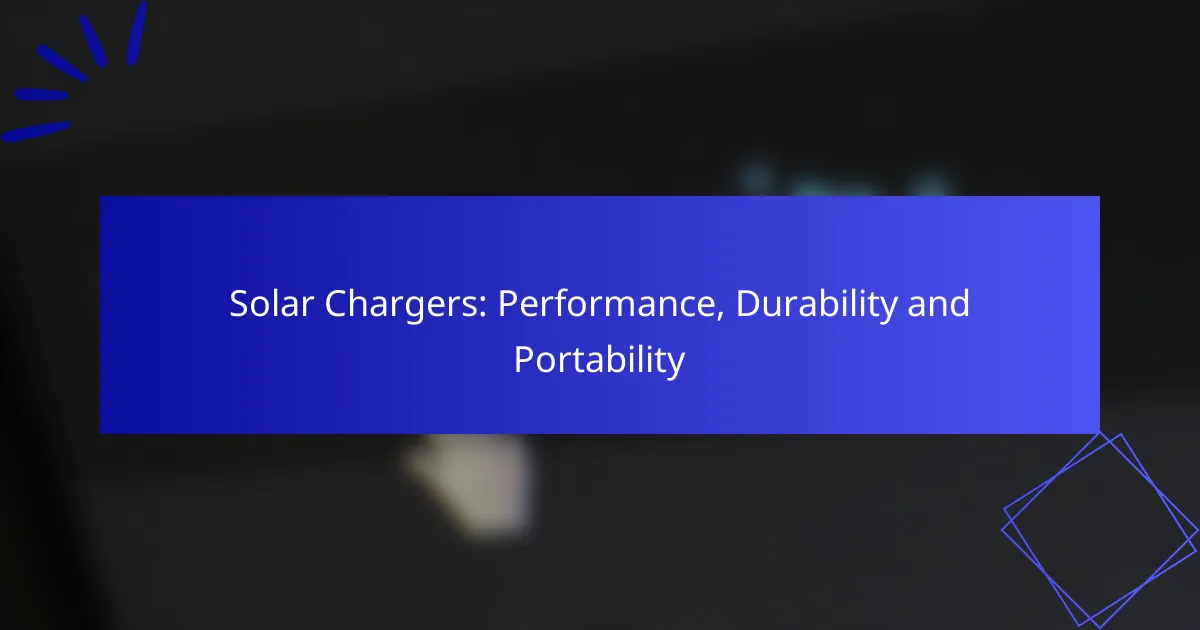In emergencies, having a reliable portable power solution is essential for ensuring access to energy when it’s needed most. High-capacity power stations not only provide backup energy but also offer versatility in charging options, making them suitable for a range of devices. Understanding the capacity, measured in watt-hours (Wh), is crucial for determining how long these solutions can sustain power during critical situations.

What are the best portable power solutions for emergencies?
The best portable power solutions for emergencies are reliable, high-capacity power stations that can support various devices. These solutions typically offer versatility in charging options and are designed to withstand challenging conditions.
Jackery Explorer 1000
The Jackery Explorer 1000 is a popular choice for emergency power needs due to its robust capacity of 1002Wh. It features multiple output options, including AC, USB, and DC ports, allowing you to charge laptops, phones, and small appliances simultaneously.
This power station is lightweight for its size, making it easy to transport. It can be recharged via solar panels, car chargers, or standard wall outlets, providing flexibility during emergencies when access to electricity may be limited.
Goal Zero Yeti 1500X
The Goal Zero Yeti 1500X offers a substantial capacity of 1516Wh, making it suitable for powering larger devices or multiple items at once. It includes a variety of ports, such as USB-C, AC, and 12V, catering to diverse charging needs.
One notable feature is its ability to be charged with solar panels, which is ideal for extended outages. However, its weight can be a drawback for some users, so consider your mobility needs when selecting this model.
EcoFlow Delta 1300
The EcoFlow Delta 1300 provides a balance of power and portability, with a capacity of 1260Wh. It is designed for rapid recharging, capable of reaching full charge in under two hours from a wall outlet, which is advantageous in urgent situations.
This power station supports a wide range of devices, from smartphones to power tools, thanks to its multiple output options. Its compact design makes it easier to carry, but users should be mindful of its power output limits to avoid overloading the system.

How reliable are portable power solutions?
Portable power solutions are generally reliable, providing backup energy during emergencies or outdoor activities. Their effectiveness can vary based on battery quality, usage conditions, and maintenance practices.
Battery lifespan
The lifespan of a portable power solution’s battery typically ranges from a few hundred to several thousand charge cycles, depending on the technology used. Lithium-ion batteries, for example, often last longer than lead-acid batteries, making them a preferred choice for many users.
To maximize battery lifespan, avoid deep discharges and extreme temperatures. Regularly charging the battery and storing it in a cool, dry place can significantly enhance its longevity.
Performance in extreme conditions
Portable power solutions can struggle in extreme conditions, such as very high or low temperatures. Many devices are rated for optimal performance between 0°C and 40°C (32°F to 104°F), and operating outside this range can lead to reduced efficiency or even damage.
When using portable power in harsh environments, look for models specifically designed for such conditions. Features like temperature regulation and rugged construction can help ensure reliable performance during emergencies.

What is the capacity of portable power stations?
The capacity of portable power stations is typically measured in watt-hours (Wh), indicating how much energy they can store and deliver. This capacity determines how long the device can power various appliances or devices during emergencies or outdoor activities.
Watt-hour ratings
Watt-hour ratings are crucial for understanding the energy storage capacity of portable power stations. Most models range from a few hundred to several thousand watt-hours, allowing users to select a unit based on their power needs. For example, a 500Wh power station can run a small refrigerator for about 5-10 hours, depending on its energy consumption.
When choosing a portable power station, consider how many devices you plan to power and their total wattage. A higher watt-hour rating will provide more flexibility and longer usage times, especially during extended outages or outdoor trips.
Output ports and power delivery
Output ports and power delivery capabilities are essential for maximizing the utility of portable power stations. Most units come equipped with a variety of ports, including AC outlets, USB ports, and DC outputs, allowing simultaneous charging of multiple devices. For instance, a station with two AC outlets and four USB ports can power a laptop while charging smartphones and tablets.
It’s important to check the total output wattage of the ports to ensure they can handle the combined load of your devices. Avoid overloading the power station by exceeding its rated output, which can lead to device damage or safety hazards. Always refer to the manufacturer’s specifications for guidance on optimal usage.

How versatile are portable power solutions?
Portable power solutions are highly versatile, allowing users to charge a variety of devices in different situations. They can be used for everything from emergency power supply during outages to enhancing outdoor experiences like camping or tailgating.
Compatibility with devices
Portable power solutions typically feature multiple output options, including USB ports, AC outlets, and DC outputs, making them compatible with a wide range of devices. Most models can charge smartphones, tablets, laptops, and even small appliances, depending on their capacity.
When selecting a portable power solution, consider the wattage requirements of your devices. For example, a power bank with a capacity of 10,000 mAh may suffice for charging phones, while larger units with 500W or more are needed for laptops or small appliances.
Use cases for outdoor activities
Portable power solutions are ideal for outdoor activities such as camping, hiking, or tailgating, providing reliable energy for essential devices. They can power lights, cooking equipment, and even portable refrigerators, enhancing the overall experience.
When planning outdoor trips, assess your power needs based on the duration and number of devices. A compact power bank may be enough for a day hike, while a larger solar generator could be necessary for extended camping trips. Always ensure you have a backup plan for recharging, like solar panels or car chargers, especially in remote areas.

What factors should you consider when choosing a portable power solution?
When selecting a portable power solution, consider weight, charging options, capacity, and reliability. These factors will determine how effective the power source is for your specific emergency needs.
Weight and portability
Weight and portability are crucial for a portable power solution, especially if you need to carry it during emergencies. Look for units that are lightweight yet robust, typically weighing between 1 to 10 kg, depending on their capacity.
Compact designs can enhance portability, making it easier to store in a vehicle or carry in a backpack. Consider options with built-in handles or straps for added convenience.
Charging options
Charging options significantly impact the versatility of a portable power solution. Many units offer multiple ways to recharge, including AC outlets, solar panels, and car chargers, allowing you to power up in various situations.
Evaluate the charging speed and compatibility with your devices. Some models may take several hours to recharge fully, while others can be ready in under two hours. Ensure the solution you choose can accommodate your most critical devices efficiently.

What are the top brands for portable power solutions?
The leading brands for portable power solutions include Renogy and Anker, known for their reliability, capacity, and versatility. These companies offer a range of products suitable for various emergency situations, ensuring users have access to dependable power when needed.
Renogy
Renogy specializes in solar power solutions, providing portable power stations that are ideal for outdoor activities and emergency preparedness. Their products often feature high-capacity batteries and multiple output options, allowing users to charge various devices simultaneously.
When considering Renogy, look for models with solar panel compatibility if you plan to use them in remote locations. Their portable power stations typically range from several hundred to a few thousand watt-hours, making them suitable for both short trips and extended power outages.
Anker
Anker is well-regarded for its compact and efficient portable power banks, which are perfect for charging smartphones, tablets, and other small electronics. Their products often include fast-charging technology and multiple USB ports, making them versatile for everyday use and emergencies.
For Anker, choose models based on your device’s power needs. Many of their power banks offer capacities from around 10,000 mAh to over 20,000 mAh, providing enough energy for multiple charges. Be mindful of the weight and size if portability is a priority for your emergency kit.

How do portable power solutions compare in pricing?
Portable power solutions vary widely in pricing based on capacity, features, and brand. Generally, you can expect to pay anywhere from a few hundred to several thousand dollars depending on the specifications and intended use.
Factors influencing pricing
Several factors affect the pricing of portable power solutions. Key considerations include battery capacity (measured in watt-hours), output options (AC, DC, USB), and additional features like solar charging capability or built-in inverters. Higher capacity units with advanced features tend to be more expensive.
Average price ranges
For basic portable power stations, prices typically start around $200 to $500. Mid-range models, which offer greater capacity and more features, generally cost between $500 and $1,200. High-end solutions, suitable for extensive use or professional applications, can exceed $1,200, reaching up to $3,000 or more.
Cost vs. capacity trade-offs
When considering cost versus capacity, it’s essential to evaluate your specific needs. A lower-priced unit may suffice for casual use, such as charging small devices during camping trips. However, for emergencies or prolonged power outages, investing in a higher-capacity model may provide better reliability and versatility.










